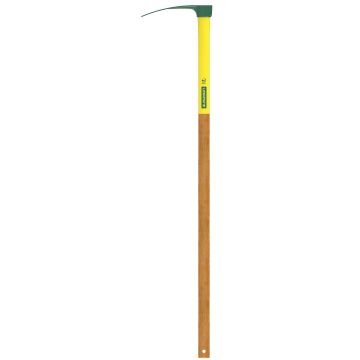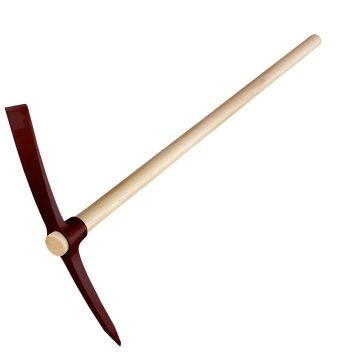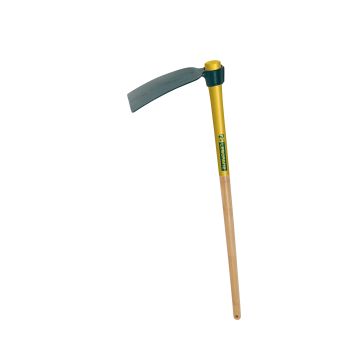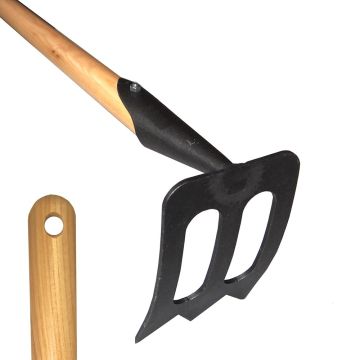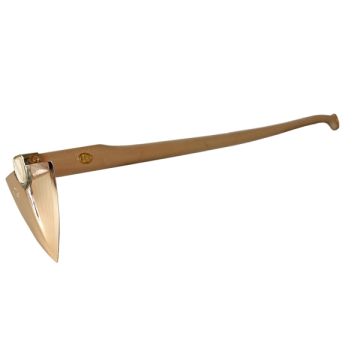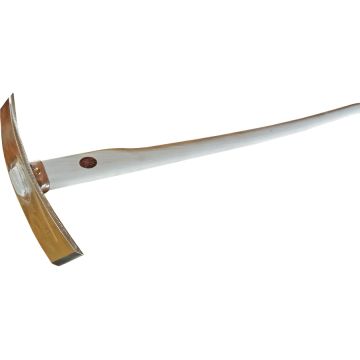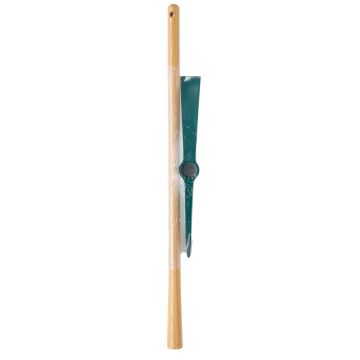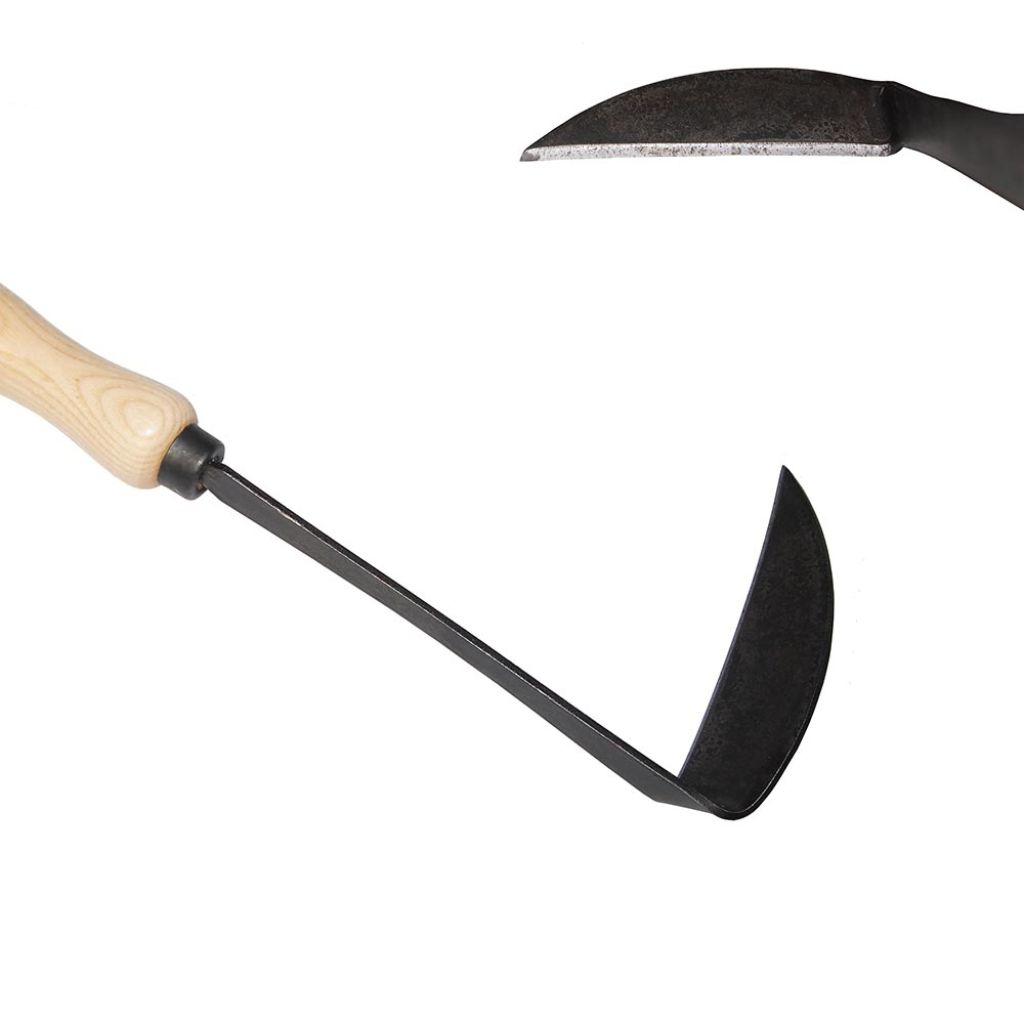

Traditional Japanese Hoe by De Pypere
Traditional Japanese Hoe by De Pypere
I am very pleased with this tool. I use it every day to cut weeds, plant my seedlings (instead of using a shovel), make rows for planting, hoe, and rake... I should mention that I am right-handed, and despite my age, its small handle does not give me back pain. It needs to be sharpened from time to time, but that's completely normal. I highly recommend this tool. Given its price, I was hesitant to order it, but honestly, I absolutely do not regret my purchase.
Dominique, 03/06/2021
Special offer!
Receive a €20 voucher for any order over €90 (excluding delivery costs, credit notes, and plastic-free options)!
1- Add your favorite plants to your cart.
2- Once you have reached €90, confirm your order (you can even choose the delivery date!).
3- As soon as your order is shipped, you will receive an email containing your voucher code, valid for 3 months (90 days).
Your voucher is unique and can only be used once, for any order with a minimum value of €20, excluding delivery costs.
Can be combined with other current offers, non-divisible and non-refundable.
Home or relay delivery (depending on size and destination)
Schedule delivery date,
and select date in basket
We guarantee the quality of our plants for a full growing cycle, and will replace at our expense any plant that fails to recover under normal climatic and planting conditions.
This traditional Japanese hoe from De Pypere is a high-quality 'Japanese weeder', a hand tool with impressive versatility and efficiency. It has a short ergonomic ash handle, and a razor-shaped, well-sharpened head, capable of cutting, weeding, scraping, and raking everywhere with precise movements. This particularly robust head is hand-forged from carbon steel, with a boron steel finish. This lightweight, easy-to-handle, high-performing, and robust tool will last for many years.
Dimensions: head 11 x 3cm (1in) -·Handle length 14cm (6in)
The Japanese hoe is still a little-known tool among Western gardeners. A hybrid between a sickle and a small hoe, this hand tool is truly versatile. This model, with its sickle-shaped blade positioned to the left, is suitable for right-handed users, who will use it with a motion from the outside to the inside. A combination of sickle, pickaxe, and hoe, the Japanese weeder can manoeuvre around plants, in flower beds, in the vegetable garden, or in flower pots. Its pointed blade will crumble and loosen the top layer of soil after digging, cutting and uprooting the most resistant unwanted plants, even digging shallow planting holes and furrows with little effort. It can also be used to easily weed under mulch. Like the hoe, the Japanese hoe is used to loosen and break up the superficial layer of soil, thus aerating the soil around cultivated plants in the vegetable or ornamental garden. It also helps prevent the formation of a compacted layer that occurs after watering or rain in clayey or loamy soils. This hard and compact layer, which is very difficult to re-humidify and suffocating for plants, also promotes the rise of water to the surface and its evaporation. Working the soil on the surface after watering limits water evaporation. The Japanese hoe is suitable for loose and light soils as well as heavy and hard soils that are difficult to work with. It consists of a short handle made of natural ash, known for its hardness, with a socket where the forged head made of tempered steel that is resistant to shocks, torsion, and corrosion is securely attached. The handle is compostable, and the metal head is recyclable.
The traditional De Pypere range includes high-quality tools, all made of forged steel and equipped with ash handles. The tempered boron steel coating on the blades is very hard and resistant, making it a valuable material for tools that can be heavily used in the garden.
This tool is under warranty. The warranty does not apply to handles or grips, only to the metal parts excluding consumables (screws, springs, etc.) and within the scope of normal use.
Technical features
Tips
Other Hoes and pick axes
View all →-
, onOrder confirmed
Reply from on Promesse de fleurs
Haven't found what you were looking for?
Hardiness is the lowest winter temperature a plant can endure without suffering serious damage or even dying. However, hardiness is affected by location (a sheltered area, such as a patio), protection (winter cover) and soil type (hardiness is improved by well-drained soil).

Photo Sharing Terms & Conditions
In order to encourage gardeners to interact and share their experiences, Promesse de fleurs offers various media enabling content to be uploaded onto its Site - in particular via the ‘Photo sharing’ module.
The User agrees to refrain from:
- Posting any content that is illegal, prejudicial, insulting, racist, inciteful to hatred, revisionist, contrary to public decency, that infringes on privacy or on the privacy rights of third parties, in particular the publicity rights of persons and goods, intellectual property rights, or the right to privacy.
- Submitting content on behalf of a third party;
- Impersonate the identity of a third party and/or publish any personal information about a third party;
In general, the User undertakes to refrain from any unethical behaviour.
All Content (in particular text, comments, files, images, photos, videos, creative works, etc.), which may be subject to property or intellectual property rights, image or other private rights, shall remain the property of the User, subject to the limited rights granted by the terms of the licence granted by Promesse de fleurs as stated below. Users are at liberty to publish or not to publish such Content on the Site, notably via the ‘Photo Sharing’ facility, and accept that this Content shall be made public and freely accessible, notably on the Internet.
Users further acknowledge, undertake to have ,and guarantee that they hold all necessary rights and permissions to publish such material on the Site, in particular with regard to the legislation in force pertaining to any privacy, property, intellectual property, image, or contractual rights, or rights of any other nature. By publishing such Content on the Site, Users acknowledge accepting full liability as publishers of the Content within the meaning of the law, and grant Promesse de fleurs, free of charge, an inclusive, worldwide licence for the said Content for the entire duration of its publication, including all reproduction, representation, up/downloading, displaying, performing, transmission, and storage rights.
Users also grant permission for their name to be linked to the Content and accept that this link may not always be made available.
By engaging in posting material, Users consent to their Content becoming automatically accessible on the Internet, in particular on other sites and/or blogs and/or web pages of the Promesse de fleurs site, including in particular social pages and the Promesse de fleurs catalogue.
Users may secure the removal of entrusted content free of charge by issuing a simple request via our contact form.
The flowering period indicated on our website applies to countries and regions located in USDA zone 8 (France, the United Kingdom, Ireland, the Netherlands, etc.)
It will vary according to where you live:
- In zones 9 to 10 (Italy, Spain, Greece, etc.), flowering will occur about 2 to 4 weeks earlier.
- In zones 6 to 7 (Germany, Poland, Slovenia, and lower mountainous regions), flowering will be delayed by 2 to 3 weeks.
- In zone 5 (Central Europe, Scandinavia), blooming will be delayed by 3 to 5 weeks.
In temperate climates, pruning of spring-flowering shrubs (forsythia, spireas, etc.) should be done just after flowering.
Pruning of summer-flowering shrubs (Indian Lilac, Perovskia, etc.) can be done in winter or spring.
In cold regions as well as with frost-sensitive plants, avoid pruning too early when severe frosts may still occur.
The planting period indicated on our website applies to countries and regions located in USDA zone 8 (France, United Kingdom, Ireland, Netherlands).
It will vary according to where you live:
- In Mediterranean zones (Marseille, Madrid, Milan, etc.), autumn and winter are the best planting periods.
- In continental zones (Strasbourg, Munich, Vienna, etc.), delay planting by 2 to 3 weeks in spring and bring it forward by 2 to 4 weeks in autumn.
- In mountainous regions (the Alps, Pyrenees, Carpathians, etc.), it is best to plant in late spring (May-June) or late summer (August-September).
The harvesting period indicated on our website applies to countries and regions in USDA zone 8 (France, England, Ireland, the Netherlands).
In colder areas (Scandinavia, Poland, Austria...) fruit and vegetable harvests are likely to be delayed by 3-4 weeks.
In warmer areas (Italy, Spain, Greece, etc.), harvesting will probably take place earlier, depending on weather conditions.
The sowing periods indicated on our website apply to countries and regions within USDA Zone 8 (France, UK, Ireland, Netherlands).
In colder areas (Scandinavia, Poland, Austria...), delay any outdoor sowing by 3-4 weeks, or sow under glass.
In warmer climes (Italy, Spain, Greece, etc.), bring outdoor sowing forward by a few weeks.






























